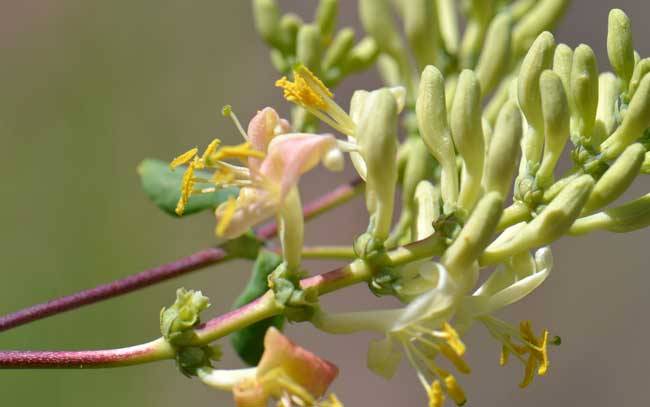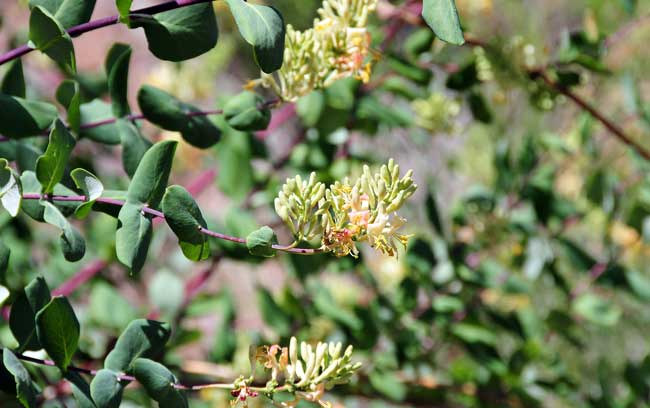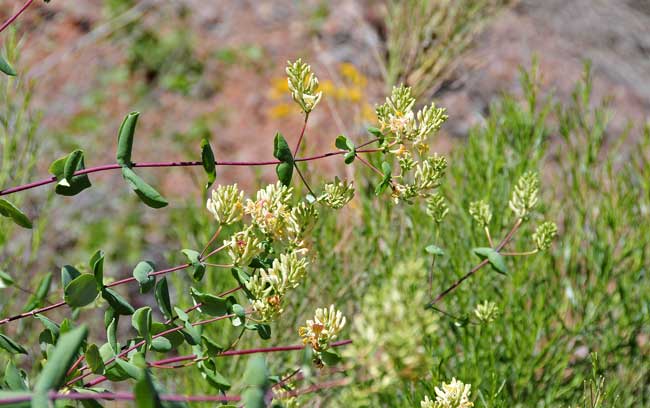Lonicera interrupta, Chaparral Honeysuckle



Scientific Name: Lonicera interrupta
Common Name: Chaparral Honeysuckle
Also Called:
Family: Caprifoliaceae, Honeysuckle Family
Synonyms: ()
Status: Native.
Duration: Perennial
Size: Up to 5 feet or more, 3 feet wide.
Growth Form: Shrub/vine; erect, woody, twining, climbing or sprawling shrub.
Leaves: Green; variable shape, oval to elliptical, deciduous, sessile and perfoliate at the stem.
Flower Color: Yellow to cream; flowers medium size about 1 cm long, stamens extend from rolled-back lips of the corolla, inflorescence a long interrupted spike, fruits are a round shiny red berry.
Flowering Season: May to June.
Elevation: 4,000 to 6,000 feet, lower elevations in California, 1,500 to 4,500 feet.
Habitat Preferences: Upper elevations, chaparral communities, rocky slopes and along edges of sandy or rocky washes.
Recorded Range: In North America, Lonicera interrupta is native to Arizona, California and Oregon. In Arizona it is recorded in Gila, Maricopa and Pima counties above 4,000 feet.
North America & US County Distribution Map for Lonicera interrupta.
U.S. Weed Information: No data available.
Invasive/Noxious Weed Information: No data available.
Wetland Indicator: No data available.
Threatened/Endangered Information: No data available.
Comments: Although Chaparral Honeysuckle is a drought tolerant plant it is found on the edges of the Upper Sonoran desert. The elongated tubular flowers readily attract hummingbirds.
In Southwest Desert Flora also see Arizona Honeysuckle, Lonicera arizonica and Western White Honeysuckle, Lonicera albiflora.
Chaparral Honeysuckle has been used for various purposes by southwestern United States indigenous peoples. See complete listing of ethno-botanical uses at Native American Ethnobotany, University of Michigan, Dearborn.

